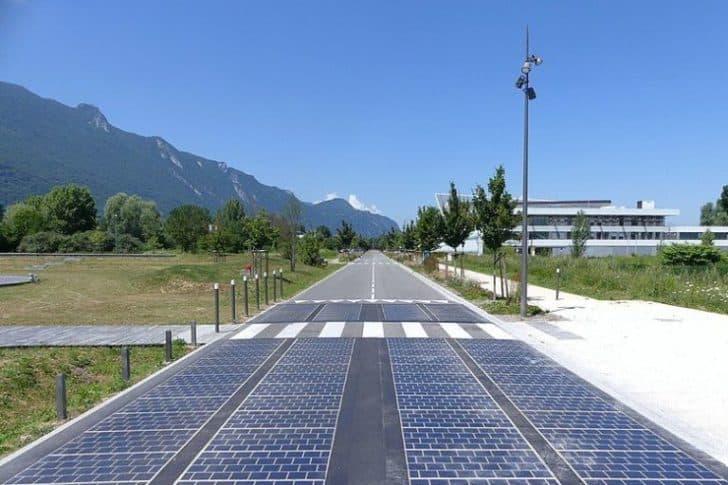An energy source can be considered sustainable if it fulfills 3 demands of energy.
- The energy can be naturally replenished.
- Technology should improve energy efficiency.
- The long term availability
Sustainable Energy is one that is able to meet the growing demand of today’s people without compromising the demand of the people that would require it in the future. All renewable energy sources like solar, wind, geothermal, hydropower, wave and tidal power are forms of sustainable energy. These energy sources have been here for centuries and are here to stay till life is available on earth. Renewable energy sources have a low environmental impact, widely available and are naturally replenished.
The energy of the world needs to grow with the maturity of our technology. Changes in technology have given rise to many other alternative sources of energy that can be harnessed through various modern techniques. There is still plenty of work to be done.
This is in relation to the population that is vastly using modern devices that add to the ever-increasing energy need. For us to cope with this energy need, energy companies should exercise a lot of keenness when it comes to their efforts in making energy accessible and available to many people at all times.
Almost all of our daily operations rely on energy, for heating, powering devices, cooling systems, cooking and much more. As such, there is a myriad of sources of energy, the majority of which are deemed as either unsustainable or non-renewable. These two terms, renewable and sustainable energy have been used for a long time, and have painted a picture that suggests they are the same. However, they are not and this article will discuss renewable and sustainable energy
Is Renewable Energy Sustainable?
The answer to this is both yes and no!
Renewable energy refers to the energy that comes from natural sources and processes that are constantly and naturally replenished on a human timescale. These sources include sunlight, waves, tidal, rain, geothermal and wind sources. Renewable energy could also refer to biomass, although its carbon-neutral status is still under debate.
Renewable energy sources make up 26% of the world’s electricity today, but the International Energy Agency (IEA) expects that figure to grow to 30% by 2024. The world can eventually run on renewable energy alone, as some nations have tested such experiments.
Sustainable energy refers to energy produced and used in a manner that meets the needs of the present generations, without compromising the ability of the future ones to meet their own needs. It, therefore, refers to energies that can be used today, and still be available in decades and centuries to come. As such, not all renewable energy can be sustainable. For instance, nuclear energy is considered renewable, but the material used in nuclear power plants is in itself not renewable. This means that although the energy itself can be stored for future generations, the materials used cannot.
We can be sure that some of the renewable sources of energy such as solar, wind and geothermal, will be available for the same purpose, in decades to come. This means that they are not only renewable but also sustainable sources of energy. On the other hand, we are not sure of the availability of some energies such as hydroelectric, given that it relies on running water turning on and spinning turbines that then generate energy.
The uncertainty lies in the part of the water, seeing that global warming and climate change are posing threats to such bodies of water, like rivers and dams. As such, although some renewable sources of energy are sustainable, some may not be. Also, if used well, some non-renewable sources of energy could be termed as sustainable, such as nuclear energy.
How Sustainable is Renewable Energy?
The extent to which renewable energy is sustainable is still a matter of discussion. This is because, for something to be really sustainable, it has to pass several other factors, which would ensure that it indeed will be used by future generations. Let’s look at a few of the points:
1. Cost: Some of these renewable sources, like wave energy, are costly to set up, run and maintain. Although they are green and clean sources, the question becomes, are they worth it? Their expensive nature may mean we, as well as the future generations, will opt for alternative sources, meaning such a renewable source of energy, although sustainable, might not be used.
2. Affecting others: A sustainable and renewable source such as wind energy, results in the death and serious injuries to birds, significantly affecting the ecosystem of an area. Although the source is really good, it comes at the detriment of others, making it, to some extent, a liability.
3. Universal application: The fight today is to ensure as many people as possible, switch to renewable sources of energy, to avoid damaging the planet and the atmosphere more. However, some of these sources of renewable energy might not be used everywhere. For instance, wave and tidal energy cannot be applied to landlocked countries as it relies on ocean currents and energy. Also, geothermal energy cannot be extracted everywhere.
According to Africa Sustainability Matters, only Kenya and Ethiopia generate geothermal energy in all of Africa, meaning the source of energy would not help someone far away from these nations, unless at a very high cost
At the same time, renewable energy is very sustainable and capable of serving present and future generations. Let’s see how:
1. It is naturally replenishable: These sources of renewable energy rely on naturally replenishable material. The world has, is and will continue to experience sunshine, leading to solar energy; wind, leading to wind energy; ocean water, leading to tidal and wave energy; and underground heat leading to geothermal energy.
These sources are not influenced by man, but by natural factors such as the sun, weather and time of day, meaning nothing can humanly be done to stop these sources from naturally replenishing themselves.
2. They are universally available: The planet is about 71% water, with the ocean holding 5% of the planet’s water. Earth is also experiencing direct sunlight each minute, and only the planet’s rotation and revolution dictate when and where that sunlight will land on the planet. The wind is also always available, with some places experiencing severe winds at certain times in a year.
These facts show that wave, solar and wind energy, respectively, can be generated all year long all over the world, and be used by everyone. The process will continue and will be used in the same manner by future generations, making these sources renewable.
3. They are acceptable sources of energy: Solar, wind and geothermal, among others, are widely accepted as sources of renewable energy. According to Gulf Gas and Power, Iceland, for instance, uses energy that nearly 100% comes from renewable sources, primarily because of their unique landscape.
Norway produces 98% of its energy from renewable sources, and Kenya produces 70% of the same. Soon, these figures will only grow, proving that renewable sources of energy are an acceptable source of energy for modern operations. It also means that future generations will pick up on the same, making renewable energy, sustainable.
Difference Between Sustainable Energy and Renewable Energy
1. Definitions
Renewable or clean energy comes from natural sources and processes that are constantly replenished. The best examples of replenishable and renewable sources are solar and wind, which is always there, even if their ability depends on time and weather.
Sustainable energy, on the other hand, refers to the energy produced and used in a manner that meets the needs of present generations, without compromising the ability of future generations to meet their own needs. A sustainable source of energy has to be maintained for the foreseeable future. Again, solar and wind are perfect examples as they will still be there even in future
2. Renewable sources can become unsustainable
Although it is generally believed that renewable sources are sustainable and vice versa, some renewable sources might be unsustainable. For instance, if renewable resources are used excessively, they can make particular energy unsustainable. Also, some renewable energy projects can lead to damage to the environment, meaning they will not become renewable.
One such process is the clearing forests for the production of biofuels as it damages the environment, making the process unsustainable or not ideal for future generations. If the renewable resource is also used up faster than it can regenerate, it eventually becomes unsustainable.
3. Non-renewable sources can also become sustainable
When some non-renewable resources are used in moderation, they can become sustainable and available to future generations. For instance, despite their impact on the environment, natural gas and coal can be sustainable sources of energy, despite them not being renewable sources.
If there is a mix of the sources of energy, so that not much is put on either source, then non-renewable sources of energy will be used sustainably in a way that future generations will also use them.
Sources of Sustainable Energy
1. Solar energy
As the name suggests, solar energy is derived from sunlight, one of the planet’s most abundant and freely available energy resources. According to the National Renewable Energy Laboratory, more energy from the sun falls on the earth in one hour than is used by everyone on the world in a year.
In the decade between 2007 and 2017, the world’s total installed energy capacity from photovoltaic panels increased a whopping 4,300%. Solar panels are fitted with photovoltaic (PV) systems that use solar cells to convert sunlight into electricity. In doing so, we get electricity to heat homes, power devices, warm water, and even cool industrial and business systems. The point of the sun being a sustainable source of energy is that it can be used to meet present needs without compromising the needs of future generations
2. Wind energy
Wind farms capture the energy of wind flow by using turbines and converting it into electrical energy. According to the Global Wind Energy Council, between 2001 and 2017, cumulative wind capacity around the world increased to more than 539,000 megawatts from 23,900 MW, more than 22-fold. In homes, windmills can be used to pump water on farms while in big organizations, commercial-grade wind-powered generating systems run such institutions.
Today, wind accounts for a little more than 7% of the total power generated in the US and is a cheap source of renewable and sustainable energy. The only limitations to wind energy is the noise generated when the turbines turn, as well as the fact that their arms strike and kill flying birds
3. Geothermal energy
This is energy derived from the heat trapped below the surface of the earth. The heat is sourced close to the surface or from heated rock and reservoirs of hot water, miles beneath the surface of the planet.
Geothermal plants then harness such sources of heat and generate electricity, used for both domestic and commercial purposes. Although this is green and renewable energy, it can become unsustainable if used in excess, although it runs a slim chance of being depleted on a human timescale
4. Wave energy
This is energy produced from the ocean and comes in two types, thermal and mechanical. Ocean thermal energy relies on warm water surface temperatures to generate energy through a variety of different systems while ocean mechanical energy uses the ebbs and flows of the tides to generate energy, created by the earth’s rotation and gravity from the moon.
Wave energy is much more consistent and easier to estimate than sun and wind energy which have varying factors. Wave energy is still untapped and can produce 2640 TWh/yr. 1 TWh/yr of energy can power just under 94,000 average US homes with power every year. Unfortunately, it can disturb marine life to generate power, is not an advantage to landlocked nations and is expensive to set up.







